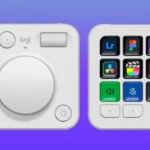OpenAI is taking a big step in personalizing its popular AI chatbot, ChatGPT. The company is rolling out an update that allows users to customize their interactions in exciting new ways. This upgrade revamps the existing custom instructions menu, enabling users to fine-tune not only how ChatGPT responds but also how it introduces itself and behaves during conversations.
A Fresh Take on Personalization
The updated interface gives users greater control over how they interact with ChatGPT. With the new customization options, users can now:
- Set a Preferred Name or Nickname: Tell ChatGPT how you’d like it to address you, making interactions feel more personal.
- Share Details About Yourself: Add your profession, interests, or anything else you think ChatGPT should know to better tailor its responses.
- Choose ChatGPT’s Personality Traits: Want ChatGPT to be extra “Chatty,” “Encouraging,” or even channel the vibe of a “Gen Z” conversationalist? These traits can now be assigned to the chatbot, giving you a more dynamic and engaging experience.
The customization menu invites users to “introduce yourself to get better, more personalized responses.” This reflects OpenAI’s focus on making ChatGPT feel less like a static tool and more like a conversational companion, shaped by your preferences.

Not to Be Confused with Memory Features
While this enhancement introduces exciting personalization options, it’s important to distinguish it from ChatGPT’s memory feature. The memory feature allows users to explicitly tell ChatGPT to remember — or forget — specific details.
Memory enables ChatGPT to retain personal details like your name or past preferences across multiple sessions. However, the new customization options are more about setting the tone and style of individual interactions rather than building a lasting memory. In essence, these traits act as temporary instructions, shaping how ChatGPT behaves in the moment without carrying those preferences over to future chats.
User-Friendly Design, Same Powerful Tech
This update appears to focus on making customization more accessible and user-friendly, rather than introducing deep technical changes. Previously, ChatGPT’s custom instructions relied on a technique called prompt engineering. In simple terms, users provided a written paragraph of instructions to guide the AI’s behavior and tone.
The new interface streamlines this process, replacing the free-form paragraph with structured fields that are easier to navigate and understand. While the underlying technology remains the same, the revamped menu lowers the barrier for users who want to fine-tune their ChatGPT experience.
Staying Within Boundaries
As with the earlier custom instructions, OpenAI applies moderation to ensure these new personalization settings align with its terms of use. This means users can experiment with the chatbot’s personality, but only within guidelines that promote ethical and respectful use.
Polishing ChatGPT for a Growing Audience
This feature is just one of many upgrades OpenAI has introduced as ChatGPT’s popularity continues to soar. Over 300 million people engage with the chatbot weekly, and OpenAI has worked tirelessly to refine the user experience.
Recent improvements include the addition of real-time web browsing capabilities, which allow ChatGPT to fetch up-to-date information, and the launch of a “Canvas” interface designed specifically for writing and coding projects. These updates reflect OpenAI’s commitment to keeping ChatGPT versatile and relevant for a wide range of users, from casual chatters to professional writers and developers.
Why This Matters
The ability to customize ChatGPT’s personality could reshape how people use the AI. Whether you’re seeking a friendly chat, professional advice, or brainstorming help, these new settings let you tailor the interaction to suit your needs.
Moreover, this update positions ChatGPT as not just a tool but an adaptable conversational partner. By giving users more control over how the AI behaves, OpenAI continues to redefine the possibilities of human-AI interaction.
As these updates roll out, the potential applications are as diverse as the users themselves. From students looking for encouragement to professionals seeking tailored advice, the ability to “design” your AI companion opens up exciting possibilities for personal and professional use alike.
With this new feature, ChatGPT is poised to become even more engaging, adaptable, and uniquely tailored to each user’s preferences. So, what personality will you give your ChatGPT today?










